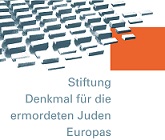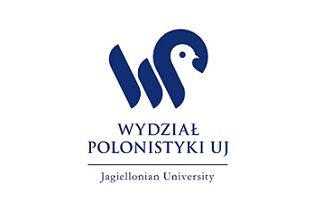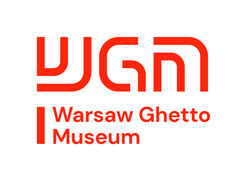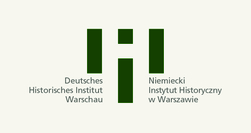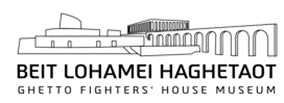The online debate will take place on YouTube on 4 November (Wednesday) at 15:00–18:50 CET.
* Please note that all times are indicated according to Warsaw time, i.e. Central European Time (UTC+1:00).
OFFICIAL OPENING
Jan Rydel, ENRS
Małgorzata Pakier (ENRS), Małgorzata Wosińska – Introduction to the conference
KEYNOTE
Piotr Cywiński (Auschwitz-Birkenau Memorial and Museum)
Remembrance in – and for – the 21st Century
PANEL PRESENTATIONS
Sławomir Kapralski (Pedagogical University of Cracow)
The Roma and the Holocaust: Memory between Recognition and Redistribution
Olof Bortz (EHESS, Paris)
Raul Hilberg: A Holocaust Scholar and Agent of Holocaust Memory
Kimberly Redding (Carroll University, Waukesha)
Local Journalists, Distant Genocides and Global Bystanders
Jana Sayantani (University of Southern California, Los Angeles)
Mass Violence and Silenced Memory: A Comparative Study of the November Pogrom of 1938 in Berlin and the Great Calcutta Killings in 1946
Chair: Małgorzata Pakier (ENRS)
Commentary: Ferenc Laczó (Maastricht University)
ABSTRACTS
Piotr Cywiński
Remembrance in – and for – the 21st Century
Bearing in mind the post-war evolution of memory in Poland and Europe, as well as the civilisational changes observed in societies, Piotr Cywiński will propose, on the basis of his own experience of the Auschwitz-Birkenau Memorial and others, the courses of action for the coming years in education and memorial narrative that are necessary for reflection and implementation.
Sławomir Kapralski
Roma and the Holocaust. Memory Between Recognition and Redistribution
In this presentation the author discusses the disintegrated and disconcerted character of the Nazi persecution of Roma and their lack of control of the postwar memory of their suffering. In result, Roma do not form a single mnemonic community but a network of such communities which often have very different lived experiences of the past and cultures of commemoration. Moreover, the social construction of the Roma memory of the Holocaust occurred within two dimensions of Roma political activism which are generally perceived as having been in conflict: the politics of identity which has characterized pan-Romani movements, struggling for recognition of Roma as transnational or non-territorial nation, and the fight for economic redistribution by smaller Roma organizations aiming at the improvement of the material situation of Roma communities they represented. In the first dimension, the memory of the Holocaust is often instrumentalized as one of the most important building blocks of Roma identity, largely constructed in the fields of culture and history. In the second dimension, the memory of the Holocaust was activated first in the fight of the German Sinti to obtain the compensation for the Nazi persecution and became an important part of their civic identity as German citizens who were the victims of National Socialism, coexisting with indirect memory manifested in the processes of their cultural retraditionalization. The author presents and attempt to synthesize these two dimensions within a single theoretical perspective, which would draw upon the resources of Axel Honneth’s theory of recognition, modified in view of Nancy Fraser’s criticism, and claiming that cultural recognition of identity and difference may also contribute to the elimination of social and economic injustice. In particular, different Roma memories of the Holocaust will be investigated as an area in which the politics of identity and the fight for redistribution may successfully merge in the process of Romani mobilization of history understood as an exercise in legitimation of their communal goals and building collective identities of different kind.
Olof Bortz
Raul Hilberg: Holocaust Scholar and Agent of Holocaust Memory
This paper analyzes the pioneering Holocaust historian Raul Hilberg and his influence on Holocaust memory. How did Hilberg influence the memory of the Holocaust and how did he react to the advent of large scale Holocaust memory? These are the questions to be probed in this paper. Hilberg is mostly known as a political scientist and Holocaust historian whose magnum opus The Destruction of the European Jews, first published in 1961, is a landmark in the development of Holocaust historiography. It was the first study to present the Jewish genocide as a massive bureaucratic undertaking spanning from 1933 to 1945 and involving the entire German state apparatus. Often described as 'monumental' it was for many decades the most significant study of the Holocaust, inspiring subsequent generations of Holocaust scholars as well as philosophers and intellectuals. However, Hilberg did not only form our understanding of the Holocaust through his research. He was also an agent of Holocaust memory. In the late 1970s, he became a member of the presidential committee on the memory of the Holocaust and the subsequent United States Holocaust Memorial Commission which eventually led to the inauguration of the United States Holocaust Memorial Museum in Washington D.C. In the early 1980s, the Office for Special Investigations started relying on his expertise in a number of denaturalization trials of former Holocaust perpetrators which caught the public eye. In 1985, he was the only historian to appear in Claude Lanzmann's documentary Shoah. The same year, he testified as an expert witness in the Canadian trial of Holocaust denier Ernst Zündel. Thus, during a pivotal moment in the development of Holocaust memory, Hilberg was both present as an expert on the history of the Holocaust and shaped its memory in ways which this paper will elucidate.
Kimberly Redding
Local Journalists, Distant Genocides and Global Bystanders
The contemporary focus on integrated histories of the Holocaust rightly centers on the geopolitical structures of Central Europe, and the multi-faceted roles played by authorities, institutions and individuals throughout a European memory landscape. Outside the European public sphere, however, this focus risks perpetuating an existent exoticization of Holocaust memory. Both in the 1930s/40s and today, geographic distance allows American audiences to distance themselves from the practice of genocide in what E.T. Linenthal describes as the “comfortable horrible.” This distantiated voyeurism facilitates the integration of Holocaust experience into American myths of “the good war,” liberation, ethical certitude and historical exceptionalism. More importantly, perhaps, comfortably horrible memoirs, films and exhibits allow audiences to experience victims, perpetrators and bystanders as distant “others,” thus escaping their own culpability as global bystanders to both the Holocaust and subsequent genocides. Since 2017, the USHMM has challenged such othering strategies through its History Unfolded citizen research initiative, which crowdsources the creation of a digital archive documenting local newspapers’ coverage of Nazi-occupied Europe. I suggest that the presence/witness of international media in Nazi-occupied Europe—and in global pre-genocidal societies today--require the expansion of traditional definitions of bystanders. In an age of professional journalism, bystanders to the Holocaust included not only local and regional “neighbors,” but also millions of American newspaper subscribers who witnessed the Holocaust through their hometown newspapers, local institutions that mediated both content and context for readers. Like proximate bystanders in the 1930s and today, global bystanders face choices about what to do with their knowledge; unlike Europeans under Nazi rule, global bystanders face few repercussions for their choices. Using elements of the sedimentation theory of cultural space, hometown newspapers as a mechanism of civic education, and student analyses of journalistic narratives, this paper explores the potential of the USHMM’s History Unfolded project to simultaneously localize knowledge of the Holocaust, disrupt the dominant othering narratives, and recenter the goal of genocide prevention in Holocaust education.
Jana Sayantani
Mass Violence and Silenced Memory: A Comparative Study of the November Pogrom of 1938 in Berlin and the Great Calcutta Killings in 1946
This paper is part of my dissertation project which is a comparative micro-historical study of two incidents of mass violence that are geographically and culturally removed from each other yet share certain similarities. The Kristallnacht (November Pogrom) took place from 9-10 November 1938 and was a nationwide pogrom orchestrated by the Nazi leadership. In Berlin, SA, SS, Hitler Youth, as well as sections of the public destroyed Jewish homes, synagogues and businesses, while also murdering an unknown number of Jews. The Calcutta Riots was a 5-day period of extreme violence that left stores, temples and homes destroyed, some 5000 people dead and over 100,000 people displaced. Although popularly termed a riot, historical evidence suggests a certain degree of pre-meditation and instigation of violence on the part of the Muslim League Provincial Government in Bengal at the time. Despite the abundance of scholarly works on both the Holocaust and the Indian Partition, it is surprising that there exists very little research on these violent events in Berlin and Calcutta, especially considering the centrality of these cities to the socio-political landscapes of their time. While Berlin was the capital and housed the largest Jewish population in Nazi Germany, Calcutta was the capital city of Bengal, with a majority Hindu population and a substantial Muslim minority, and had been one of the earliest seats of anti-colonial, nationalist uprisings. Based on news reports, oral histories of the USC Shoah Foundation and the 1947 Partition Archive, as well as personal interviews conducted with partition survivors, my paper will thus attempt to recuperate the silenced memory of these events, while also exploring comparative questions of violent nationalism, forced displacement of certain populations and the role of the urban landscape in a pogrom/riot. In doing so, it will try to understand how and why such a conspicuous silence exists in regard to the Kristallnacht in Berlin and the Calcutta Riots in Calcutta and how this, in turn, has affected the national memory of each of these events in their respective countries.


